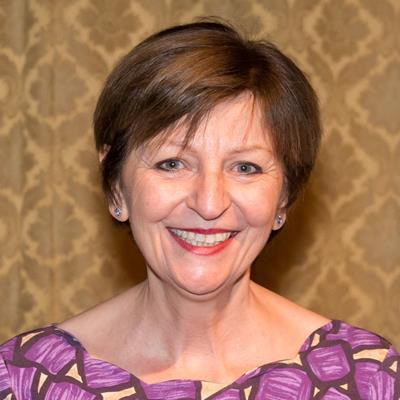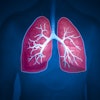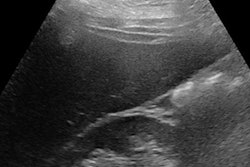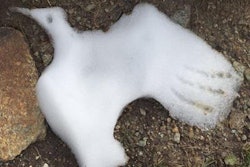
Dr. Catherine Adamsbaum is the president of France's national radiology congress (JFR), which begins on 11 October. A pediatric radiologist who specializes in neuro and musculoskeletal (MSK) imaging, Adamsbaum is head of pediatric imaging at Bicêtre Hospital in Paris and professor at Paris Saclay University.
How did she get to be where she is today, and where does she see radiology heading? We present some less well-known facts about the person behind this year's presidency.
1. Adamsbaum runs her department like an orchestra
 Dr. Catherine Adamsbaum.
Dr. Catherine Adamsbaum.She says her objective as head of a staff of 40 is to manage the department like a "conductor" of excellent soloists. She is proud of her department and believes the key traits of its personnel are generosity and humanity. Staff aim to promote well-being among their patients through "therapeutic communication," which is based on the use of positive words and listening skills for children and parents. One caregiver even plays harmonica to calm patients and families, she noted.
In the coming months, the department will install a low-dose x-ray (EOS Imaging) system. Adamsbaum believes the system will significantly improve pediatric imaging while serving as a reminder of her own part in testing Dr. Georges Charpak's innovation, 20 years ago. The advantage of the EOS system is both the low x-ray dose delivered and that it can be used in a standing position to depict limb and spine deformities in the same view, including 3D views. Bicêtre is the reference center for phosphocalcic metabolic diseases such as genetic rickets, responsible for lower limb deformities, so access to the system will provide unprecedented in-house quality patient care, according to Adamsbaum.
The department is also a world reference center for pediatric interventional radiology in the field of hepatobiliary disease and liver transplantation due to the work of Drs. Danièle Pariente and Stéphanie Franchi-Abella, she added.
Over the next couple of weeks, the department is setting up indoor bike and step activities for staff. Her dream would be to hold collective singing, dancing, and gymnastics sessions, but she admits it is difficult to organize these activities in public hospitals.
2. She's helping to develop an artificial intelligence tool for premature babies
For the past few years Adamsbaum has been working on algorithms to predict the neurological prognosis of premature babies. It isn't used yet in routine practice, but, hopefully, it will allow the semiautomatic assessment of white matter to evaluate volume and signal intensity of brain parenchyma.
"The idea is to use it on newborn premature babies to predict whether neuro follow-up will be necessary due to impaired learning capacity or cognitive function," she told AuntMinnieEurope.com.
 Adamsbaum speaking during a conference.
Adamsbaum speaking during a conference.Neonatologists can successfully resuscitate neonates at 24 to 25 weeks of gestation. However, even if the brain looks normal, some of these babies will have disabilities while others won't, she explained. Evaluating volumes of different structures would be time-consuming if undertaken by humans, which is where artificial intelligence (AI) proves so useful. In time, the algorithm will allow doctors to study cohorts of babies to determine if certain volumes of different structures are predictive of impairment.
"It's exciting to think that new algorithms will help us to focus on our medical tasks that are our additional value," Adamsbaum said. "These being the 'intelligent diagnosis' and 'intelligent human communication' of results to both patients and clinicians."
3. She divides her life into 'Before Africa' and 'After Africa'
At the beginning of her radiology residency in 1983, Adamsbaum spent a year living in Burkina Faso, where she worked as a general practitioner (GP).
She learned the basis of the main Burkina language ('Moore) and visited the bush with a team of American epidemiologists and infectious disease doctors from the U.S. Centers for Disease Control and Prevention who, after studying clinical protection afforded by the group A meningococcal polysaccharide vaccine over a three-year period, concluded that a single dose of the vaccine does not yield lasting clinical protection in children younger than 4 years of age.
"There is a 'before' and an 'after' this year in West Africa. I learned a lot -- not only about medicine itself, but also about humanity, beliefs, and living conditions," she noted. "Furthermore, it broadened my perspective of illness and disease."
She cited the example of a child in the West who if 5 cm shorter than the national average will be considered "abnormal" and, therefore, examined by specialists. In Burkina Faso, being 5 cm shorter than normal is the least of their worries, she continued. This is a country where, at the time, people might ride to the hospital by bike to be diagnosed with meningitis.
"I didn't think that approaches to disease and medicine in the capital city of Ouagadougou would be so different to those in Europe, but they were," she said. "The experience has left such a deep imprint on me that what I considered basic medicine changed -- and I know the difference between a minor health issue and a major one. This has also helped me when I talk to parents of sick children," she noted.
4. Two key mentors showed her the power of radiology
Since her early childhood Adamsbaum wanted to be a doctor, dreaming that she would make people see when they were born blind. When she was older and studying medicine, it was meeting the late Prof. Marc Levesque during her first radiology rotation that set her on course for a career in imaging. Levesque taught his residents to see the huge potential of diagnostic and interventional radiology, and he used riddles in his lessons to entertain and educate.
Her key interests of musculoskeletal and neuroimaging were triggered by the invaluable input of Prof. Gabriel Kalifa, with whom she worked for almost 20 years at Saint-Vincent-de-Paul hospital in Paris. Expert clinicians in both fields at the hospital made meetings stimulating and dynamic, she remembers.
Indeed, she senses that a crucial skill in pediatric radiology is to make its practice transversal and multidisciplinary.
"Pediatric radiology is intellectually very satisfying. Unlike adults who present with mixed symptoms and tend to have diagnoses of concurrent pathologies or diseases, children tend to present with one symptom or question, and, therefore, you tend to be looking for one diagnosis, and when you find it, you have a eureka moment," she noted.
5. Outside of radiology she loves to ... dance!
Adamsbaum's favorite hobby is dancing. The Argentine tango, in particular, helps her recharge her batteries after a hard week at work.
 Adamsbaum loves to dance, most frequently the Argentine tango.
Adamsbaum loves to dance, most frequently the Argentine tango."The concentration needed to dance with a partner, while at one with the beautiful music, helps me to disconnect," she said.
Looking ahead to the main themes at JFR 2019, she said radiology is evolving exponentially as advances in technology impact medicine, and, therefore, the theme of JFR this year is the "enhanced radiologist," encompassing the human, ethical, algorithmical, and therapeutic aspects of the profession.
"With such immense potential to hand, we hope to determine how we can best respond to patient needs and how we can best and intelligently integrate radiology in care and, more generally, in society," she noted.
Key topics will include intelligent integration of AI in imaging, new ethics, imaging the disadvantaged, screening, imaging adolescents, advanced visualization techniques (including 3D printing), and diagnostic and interventional imaging for the care of advanced cancer.
New this year, JFR has a dedicated session with GPs to improve patients' care pathways, particularly in terms of imaging requests, and rapid, comprehensive results delivery. GPs from France and Belgium will be sharing their experiences and expectations at the Sunday session.
Radiophysicists will also be managing a session dedicated to optimizing collaborative work on radiation protection. Meanwhile, the 2019 JFR teaching sessions aimed at young radiologists and coordinated by Prof. Philippe Petit this year focus on thyroid and cervical pathologies.



















